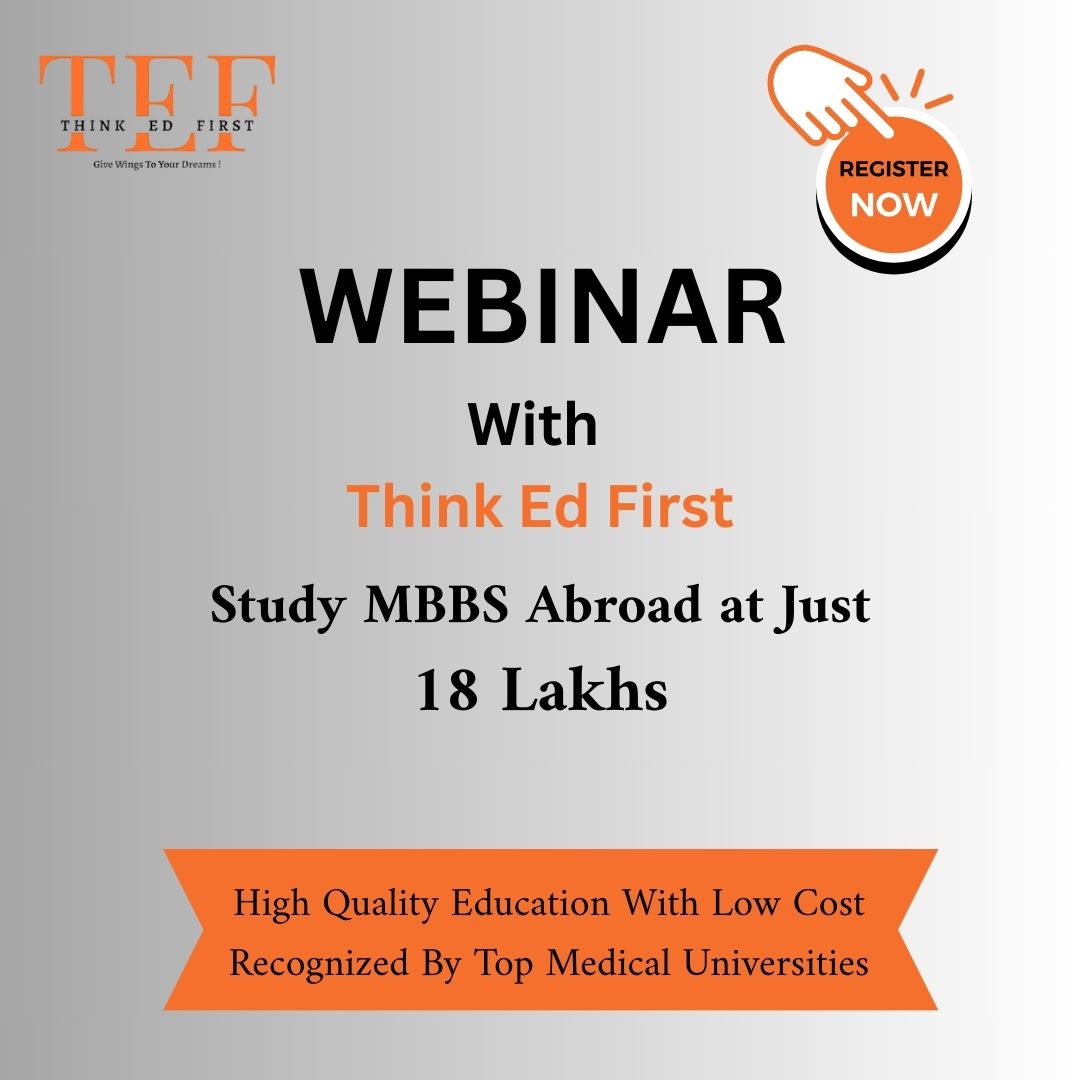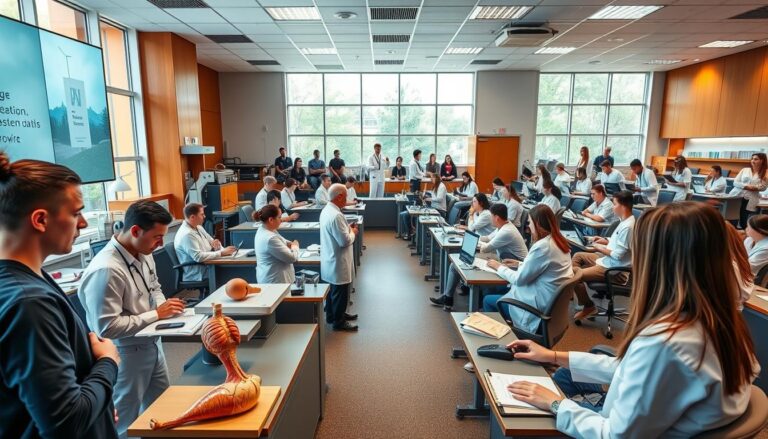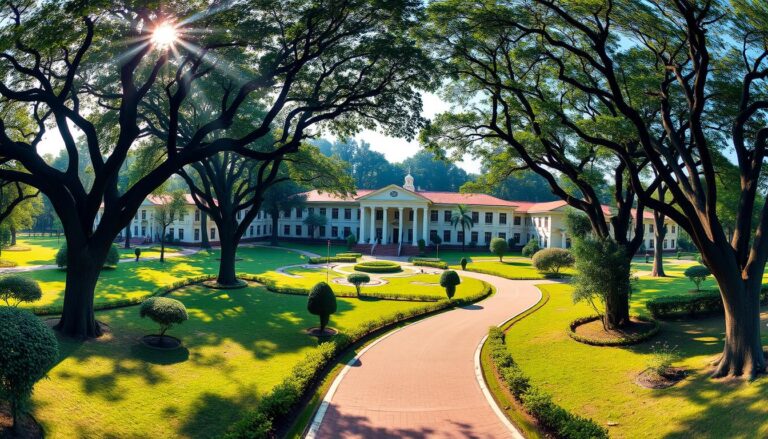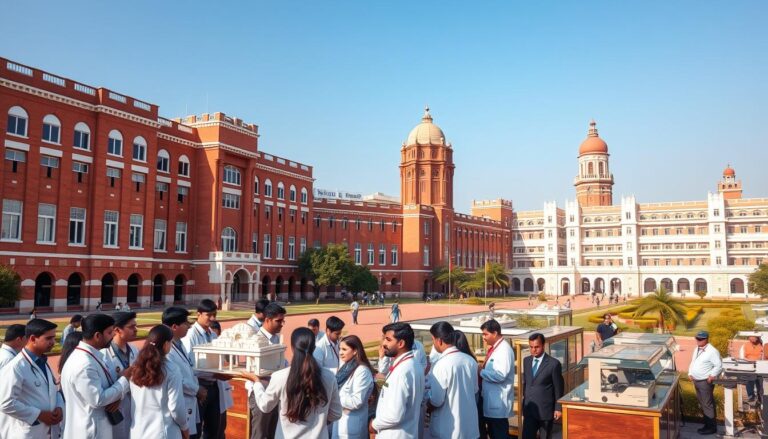Have you ever wondered how quotas influence the path to becoming a doctor? The system ensures that students from diverse backgrounds have a fair chance at securing seats in top medical colleges. Understanding these policies can make a significant difference in your admission strategy.
With over 76,000 seats available nationwide, the government has implemented specific quotas to promote inclusivity. These include provisions for SC, ST, OBC, EWS, and PwD candidates. Each category has unique documentation requirements that must be met to qualify.
Recent changes, like the 2021 expansion of OBC and EWS quotas, have opened more opportunities for aspiring doctors. Knowing how these quotas work can help you navigate the admission process more effectively. Stay informed to make the most of these policies.
Understanding MBBS Reservation Categories in India
Government medical colleges allocate seats based on specific quota systems that vary by state. These systems ensure fair opportunities for students from diverse backgrounds. Knowing how they work can help you plan your admission strategy effectively.
There are two main types of reservation systems: vertical and horizontal. Vertical reservations apply to specific groups like SC, ST, OBC, and EWS. Horizontal reservations cut across these groups, covering categories like PwD and defense personnel.
State-specific variations play a significant role in how these quotas are implemented. For example, Karnataka reserves 15% of seats for rural candidates and 5% for Kannada medium students. Such differences highlight the importance of understanding local policies.
The National Testing Agency (NTA) sets the criteria for NEET reservation. It ensures that the process is standardized across the country. However, central universities and state colleges may have different quota allocations.
Recent Supreme Court judgments have also impacted quota policies. For instance, the decision on OBC reservations in All India Quota seats has opened new opportunities for eligible candidates. Staying updated on such changes is crucial for aspiring medical students.
| Quota Type | Percentage of Seats |
|---|---|
| State Quota | 85% |
| All India Quota | 15% |
| SC | 15% |
| ST | 7.5% |
| OBC | 27% |
| EWS | 10% |
| PwD | 5% |
Understanding these systems can make a significant difference in your journey to securing a seat in a top medical college. Stay informed and prepared to navigate the admission process successfully.
Why Reservation Exists for MBBS Admissions
The journey to medical education is shaped by policies aimed at fairness and representation. These systems are rooted in the constitutional mandate of Articles 15(4) and 16(4), which emphasize social justice and educational equity. They were established to address historical educational disparities and ensure that all sections of society have access to opportunities.
One of the primary goals is to improve representation in healthcare professions. By providing reserved seats, the system ensures that students from marginalized communities can contribute to the medical field. This is especially important in rural areas, where healthcare access remains a challenge.
In 2019, the government introduced the Economically Weaker Sections (EWS) quota. This move aimed to promote economic inclusion, allowing students from low-income families to pursue medical education. The EWS quota has expanded opportunities for many, particularly in underserved regions.
Despite its benefits, the reservation system faces ongoing debates about its effectiveness. Critics argue that it may limit opportunities for general category students, while supporters highlight its role in bridging historical gaps. Understanding this balance is crucial for evaluating the system’s impact.
| Quota Type | Purpose |
|---|---|
| SC | Address caste-based disparities |
| ST | Promote tribal representation |
| OBC | Support backward classes |
| EWS | Ensure economic inclusion |
| PwD | Enable access for persons with disabilities |
Reservation policies continue to evolve, reflecting the changing needs of society. By understanding their historical context and purpose, we can better appreciate their role in shaping the future of medical education.
NEET 2025 Reservation Criteria: Key Updates
The NEET 2025 reservation criteria bring significant updates for aspiring medical students. These changes aim to make the admission process more inclusive and transparent. Understanding these updates can help you navigate the system effectively and secure a seat in your preferred college.
Changes in All India Quota Seats
The All India Quota (AIQ) seats have seen notable adjustments for NEET 2025. A total of 891 additional seats have been added since 2020, expanding opportunities for students. The AIQ now includes new ESIC medical colleges, further increasing the pool of available seats.
For OBC candidates, 27% of AIQ seats are reserved, while EWS candidates benefit from a 10% quota. Additionally, a 5% horizontal reservation is available for Persons with Disabilities (PwD) across all categories. These changes ensure a more equitable distribution of seats.
New Policies for EWS and OBC Candidates
EWS candidates must meet revised income limits, with an annual family income cap of ₹8 lakh. This update aims to make the quota more accessible to economically weaker sections. Proper documentation, including income certificates, is mandatory to claim this benefit.
For OBC candidates, the non-creamy layer (NCL) certificate is now compulsory. This ensures that only eligible candidates from backward classes can avail of the 27% reservation. The NCL criteria have been streamlined to simplify the application process.
The Medical Counselling Committee (MCC) has also modified its counselling process. These changes aim to make seat allocation smoother and more efficient. Staying updated on these policies can give you an edge during the admission process.
Breaking Down MBBS Reservation Categories India
Seat distribution policies vary significantly between state and central institutions. This difference plays a crucial role in how students secure their spots in top medical colleges. Understanding these variations can help you plan your admission strategy effectively.
State institutions often have unique provisions tailored to local needs. For example, Jammu & Kashmir has special quotas to support students from the region. Central institutions, on the other hand, follow a more standardized approach, with clear guidelines for seat allocation.
Category-wise seat distribution is another critical factor. Institutions like Lady Hardinge Medical College offer 26 All India Quota (AIQ) seats, while ACSR GMC Nellore reserves 10 UR seats. These matrices ensure that students from diverse backgrounds have fair opportunities.
The impact of NRI quotas also cannot be overlooked. These seats often reduce the availability of reserved seats for local candidates. However, the 2025 expansion of 7,000 new seats aims to balance this, providing more opportunities for aspiring doctors.
- State vs central institution differences in seat allocation.
- Special provisions for Jammu & Kashmir students.
- Impact of NRI quotas on seat availability.
- 2025’s 7,000 new seat expansion for aspiring doctors.
By understanding these policies, you can better navigate the admission process. Stay informed about the latest updates to make the most of these opportunities.
Scheduled Caste (SC) Quota: Eligibility and Benefits
Understanding the SC quota can open doors to medical education for many students. This system ensures fair access to seats for deserving candidates from marginalized communities. By meeting specific criteria, students can secure their place in top institutions.
Documentation Required for SC Reservation
To apply under the SC quota, students must submit a caste certificate issued by the District Magistrate or Additional District Magistrate. This document verifies their eligibility and is mandatory for the admission process. Additionally, proof of income may be required for certain benefits like fee exemptions.
State-specific sub-categorization can also impact the process. For example, some states have unique provisions for SC candidates. It’s essential to check local guidelines to ensure all documents are valid and up-to-date.
Percentage of Seats Reserved Under SC Category
Under the All India Quota scheme, 15% of seats are reserved for SC candidates. This percentage is mandatory across central and state institutions. Top colleges like B.J. Medical College Ahmedabad allocate specific seats for SC students, ensuring representation in prestigious programs.
To qualify, candidates must meet a minimum of 40% marks in Physics, Chemistry, and Biology (PCB). This requirement ensures that students are academically prepared for the rigorous curriculum.
- State-specific SC sub-categorization affects eligibility.
- Caste certificates must be valid and issued by authorized officials.
- Minimum 40% PCB marks are required for qualification.
- Common document rejection reasons include incomplete forms or expired certificates.
By understanding these requirements, students can navigate the admission process effectively and secure their seats under the SC quota.
Scheduled Tribe (ST) Quota: What You Need to Know
The Scheduled Tribe (ST) quota ensures fair access to education for tribal communities. This system is designed to provide opportunities for students from these backgrounds to pursue their dreams. With a 7.5% national quota, the ST category plays a crucial role in promoting inclusivity.
To benefit from this system, students must meet specific eligibility criteria and provide the necessary documentation. Understanding the application process and state-wise variations can make a significant difference in securing a seat.
How to Apply for ST Reservation
The application process for the ST quota involves submitting a valid caste certificate issued by competent authorities. These include the District Magistrate, Additional District Magistrate, or Tehsildar. Proper documentation is essential to avoid rejection.
In some cases, additional proofs like tribal area residency or migration certificates may be required. Students should also ensure they meet the minimum academic criteria to qualify for the quota.
State-wise Variations in ST Quota Policies
ST quota policies vary across states, with some offering additional benefits. For example, Tripura Medical College reserves 15% of seats locally for ST candidates. Northeastern states often have special provisions to support tribal students.
- Particularly Vulnerable Tribal Groups (PVTG) receive additional benefits.
- Northeastern states offer unique provisions for tribal students.
- Migration certificates are required for students from other states.
- Top institutions like Assam Medical College have dedicated ST seats.
- Proof of tribal area residency is mandatory in some cases.
By understanding these variations, students can better navigate the admission process and secure their seats under the ST quota.
OBC Reservation in MBBS: Rules and Regulations
The OBC quota plays a pivotal role in ensuring fair access to education for backward classes. This system provides opportunities for students who might otherwise face barriers in pursuing their dreams. With a 27% reservation in the All India Quota (AIQ), the OBC quota is a significant part of the admission process.
To benefit from this system, students must meet specific criteria, including the Non-Creamy Layer (NCL) requirements. Understanding these rules can help you navigate the admission process effectively and secure a seat in a top institution.
Non-Creamy Layer (NCL) Criteria
The NCL criteria are essential for determining eligibility under the OBC quota. Students must have an annual family income below ₹8 lakh to qualify. Additionally, certain exclusions apply based on parental service categories and land ownership thresholds.
For example, families owning more than 5 acres of agricultural land or residential properties exceeding specific sizes are excluded. The NCL certificate must be renewed annually and issued by competent authorities to remain valid.
- Annual income must not exceed ₹8 lakh.
- Land ownership should be below 5 acres of agricultural land.
- Residential properties must not exceed 1000 sq ft in notified areas.
- Parental service categories like Group A officers disqualify applicants.
Colleges Offering OBC Quota Seats
Several prestigious institutions offer seats under the OBC quota. These include top universities like Grant Medical College Mumbai and Lady Hardinge Medical College in New Delhi. Each college follows the 27% reservation policy, ensuring fair representation for OBC candidates.
| College Name | Location |
|---|---|
| Grant Medical College | Mumbai |
| Lady Hardinge Medical College | New Delhi |
| University College of Medical Sciences | New Delhi |
| Institute of Medical Sciences, BHU | Varanasi |
By understanding these rules and opportunities, students can better prepare for the admission process. Stay informed and ensure all documentation is up-to-date to make the most of the OBC quota.
EWS Quota for MBBS Admissions
The EWS quota ensures financial inclusivity in education for deserving candidates. This system provides opportunities for students from economically weaker sections to pursue their dreams without financial constraints. With a 10% reservation in the All India Quota, the EWS quota is a significant step toward promoting equity.
Income and Asset Limits for EWS Eligibility
To qualify for the EWS quota, candidates must meet specific income and asset limits. The annual family income should not exceed ₹8 lakh. Additionally, families must not own agricultural land exceeding 5 acres or a residential flat larger than 1000 sq. ft in notified municipalities.
Proper documentation is crucial for claiming this benefit. Students must submit an income certificate issued by competent authorities like the District Magistrate or Tehsildar. Property proofs, such as land records or residential flat details, are also required.
List of Medical Colleges Under EWS Reservation
Several top institutions participate in the EWS quota system. These include VMMC Safdarjung Hospital, Grant Medical College Mumbai, and Lady Hardinge Medical College. Each college follows the 10% reservation policy, ensuring fair representation for EWS candidates.
- 2025 property documentation requirements include updated income certificates and property proofs.
- EWS vs General category cut-off differences often favor EWS candidates due to the reserved seats.
- Participating institutes like VMMC Safdarjung Hospital offer dedicated EWS seats.
- Income certificate issuance process involves verification by local authorities.
- Common EWS application errors include incomplete forms or expired certificates.
By understanding these criteria and opportunities, students can better prepare for the admission process. Stay informed and ensure all documentation is up-to-date to make the most of the EWS quota.
Persons with Disability (PwD) Reservation in NEET
Ensuring equal opportunities for all, the PwD reservation in NEET provides a pathway for students with disabilities to pursue their medical aspirations. With a 5% horizontal reservation, this system ensures inclusivity and accessibility for deserving candidates.
To qualify, candidates must have a disability ranging from 40% to 80%. A valid disability certificate issued by designated centers like Safdarjung Hospital is mandatory. These certificates are processed through 15 assessment boards across the country.
Assistive technology provisions, such as scribes and compensatory time, are available for candidates with specific needs. For example, visually impaired or those with locomotor disability receive an additional hour during the 3-hour NEET exam.
Top institutions like IPGMER Kolkata are known for their PwD-friendly infrastructure. The 2025 update introduces new disability categories, expanding opportunities for more students. These changes reflect the evolving needs of the medical education system.
- 40-80% disability requirement for eligibility.
- Assistive technology and compensatory time provisions.
- New disability categories added in 2025.
- Designated centers like Safdarjung Hospital for certification.
For detailed information on the application process, including the requirement for a Person With Benchmark Disability (PwBD) Certificate, visit our registration guide. Stay informed and prepared to make the most of these opportunities.
All India Quota vs. State Quota Seats
Navigating the admission process for medical colleges involves understanding the key differences between All India Quota and State Quota seats. These two systems play a crucial role in determining how seats are allocated and who can apply for them. Knowing the distinctions can help you plan your strategy effectively.
Differences in Reservation Policies
The All India Quota (AIQ) accounts for 15% of seats in government medical colleges nationwide. These seats are managed by the Medical Counselling Committee (MCC) and follow central government reservation rules. On the other hand, State Quota seats make up 85% of the total and are managed by individual state authorities, each with its own policies.
For example, Maharashtra reserves 13% of seats for SC candidates, while Karnataka allocates 15%. Such variations highlight the importance of understanding state-specific rules. Additionally, migration certificates are often required for students applying under State Quota seats from other regions.
How to Apply for Each Quota
The application process for AIQ involves online registration, preference selection, and national-level counselling. This system is advantageous for candidates with high NEET ranks, as it opens doors to prestigious institutions across the country.
State Quota applications, however, require state-specific processes. These include document verification and local counselling. While the competition is often less intense, the seat availability is higher, making it a viable option for candidates with lower ranks.
- AIQ is managed by MCC, while State Quota is handled locally.
- Migration certificates are mandatory for State Quota applicants from other states.
- Recent changes in Tamil Nadu’s reservation laws impact State Quota policies.
- AIQ offers consistent fee structures, while State Quota fees vary by state.
By understanding these differences and processes, you can make informed decisions and increase your chances of securing a seat in your preferred college.
How to Claim Your Reserved Seat in MBBS
Securing a seat in medical colleges involves more than just clearing exams. The process of claiming a reserved seat requires careful preparation and adherence to specific guidelines. Understanding the steps can make the admission process smoother and less stressful.
The first step is to register for the counselling process. This involves filling out an online form and submitting the required documents. Original certificates, along with three attested photocopies, are mandatory for verification. These include your NEET admit card, rank card, and category-specific certificates.
Next, you’ll need to participate in the seat matrix allocation. This is where your preferences are locked based on your rank and the availability of seats. It’s crucial to choose wisely, as this step determines your final allotment.
For migrated candidates, special provisions apply. You must ensure that your domicile certificate meets the state-specific requirements. This is particularly important if you’re applying under the state quota.
Once the seat is allotted, you’ll need to report to the designated college for document submission and verification. This step confirms your eligibility and finalizes your admission. Seat freezing policies ensure that your spot is secured once all formalities are completed.
- Register for counselling and submit required documents.
- Participate in the seat matrix allocation process.
- Ensure compliance with state-specific provisions for migrated candidates.
- Report to the allotted college for verification and fee payment.
By following these steps, you can navigate the process effectively and secure your reserved seat. Stay organized and ensure all documents are up-to-date to avoid any last-minute hurdles.
Common Mistakes to Avoid When Applying for Reservations
Applying for reserved seats can be tricky if you’re not careful with the details. Many students face rejection due to avoidable errors. In 2024, 23% of applications were rejected because of invalid certificates. Understanding these pitfalls can save you time and effort.
One of the most common issues is incorrect caste certificate formats. Students often submit certificates that don’t meet the required standards. Always ensure your documents are issued by competent authorities and follow the prescribed format.
Another frequent mistake is missing non-creamy layer declarations. For OBC candidates, this is crucial. Without a valid NCL certificate, your application will be rejected. Make sure to renew your certificate annually and keep it up-to-date.
EWS applicants often overlook asset disclosure requirements. Failing to provide accurate details about income and property can lead to disqualification. Double-check all information before submitting your application.
PwD candidates must ensure their disability certificates are valid. Certificates issued by unauthorized centers or those that have expired will not be accepted. Always verify the issuing authority and the certificate’s validity period.
Applying under multiple quotas can also cause conflicts. Choose the category that best fits your eligibility to avoid complications. Conflicting applications often lead to delays or rejections.
| Common Mistake | Solution |
|---|---|
| Incorrect caste certificate formats | Verify the format with competent authorities |
| Missing non-creamy layer declarations | Renew NCL certificate annually |
| EWS asset disclosure oversights | Double-check income and property details |
| PwD certificate validity issues | Ensure certificates are issued by authorized centers |
| Multiple quota application conflicts | Apply under the most suitable category |
By avoiding these common mistakes, you can streamline your application process and increase your chances of securing a seat. Stay organized and ensure all documents are valid and up-to-date.
Impact of Reservation on MBBS Cut-Off Marks
Understanding how cut-off marks vary across categories can help you plan your medical admission strategy. These variations reflect the influence of quotas on seat allocation and competition levels. By analyzing these trends, you can better prepare for the admission process.
In 2024, the general category cut-off ranged from 720 to 138, while OBC candidates had a range of 710 to 108. SC candidates saw a lower range of 695 to 95. These differences highlight the impact of category-wise marks on admission chances.
For 2025, predicted cut-offs suggest similar trends. State quotas often have lower cut-offs compared to All India Quota (AIQ) seats. This is due to the higher number of seats available under state policies.
- EWS candidates typically have slightly lower cut-offs than UR candidates, providing a slight advantage.
- PwD candidates benefit from mark relaxations, with a 5% reduction in cut-off scores.
- Previous year’s closing ranks show consistent patterns, with top institutions requiring higher scores.
By understanding these variations, you can set realistic goals and focus on improving your rank. Stay updated on the latest trends to make informed decisions during the admission process.
Future of Reservation Policies in Medical Education
The landscape of medical education is evolving with new policies aimed at inclusivity. These changes are designed to address gaps and ensure fair opportunities for all students. One significant proposal under review is the 10% expansion of the EWS quota in private colleges. This move could open doors for more economically disadvantaged students.
Policy reforms are also focusing on revising income limits for the creamy layer. This ensures that benefits reach those who truly need them. Digital caste verification systems are being introduced to streamline the process and reduce fraud. These advancements aim to make the system more transparent and efficient.

Private colleges may soon face mandates to implement reservation policies. This could level the playing field for students across institutions. Additionally, inter-state migration quota proposals are being considered to support students moving for education. AI-based optimization models are also being explored to ensure fair seat allocation.
| Proposed Reform | Impact |
|---|---|
| EWS Expansion in Private Colleges | Increased access for economically weaker students |
| Digital Caste Verification | Reduced fraud and streamlined processes |
| Private College Reservation Mandates | Fairer opportunities across institutions |
| Inter-State Migration Quotas | Support for students relocating for education |
| AI-Based Optimization Models | Efficient and fair seat allocation |
Supreme Court rulings continue to shape these policies, ensuring they align with constitutional principles. As we move forward, these reforms will play a crucial role in making medical education more accessible and equitable for everyone.
Conclusion
Planning your admission strategy requires understanding the latest updates in seat allocation. Recent changes, such as the 27% OBC and 10% EWS quotas, have expanded opportunities for students. These reservation benefits ensure fair access to education for diverse groups.
For 2025 applicants, a thorough documentation checklist is essential. Ensure all certificates, including caste, income, and disability proofs, are valid and up-to-date. Resources for certificate downloads are available on official websites to simplify the process.
Mark your calendars for important counselling dates to avoid missing deadlines. Stay informed about state-specific policies and deadlines to make the most of your application. For any quota-related queries, contact the Medical Counselling Committee or your state’s admission authority.





